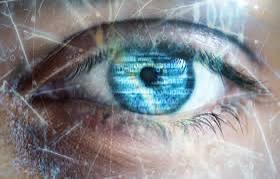In today’s digital age, screens are an integral part of daily life. From smartphones and computers to televisions and tablets, many people spend hours each day in front of a screen. While these devices offer convenience and entertainment, excessive screen time poses significant risks to eye health.
1. Digital Eye Strain (Computer Vision Syndrome)

One of the most common issues caused by prolonged screen use is digital eye strain, also known as Computer Vision Syndrome (CVS).
Symptoms include:
– Eye discomfort or fatigue.
– Blurred or double vision.
– Dry or irritated eyes.
– Headaches and neck pain.
This condition arises from focusing on screens for extended periods without breaks, forcing the eyes to constantly adjust to screen glare and small text sizes.
2. Blue Light Exposure
Screens emit blue light, which can be harmful to the eyes. Excessive exposure to blue light has been linked to:
– Disrupted Sleep Patterns: Blue light interferes with melatonin production, making it harder to fall asleep.
– Potential Retina Damage: Prolonged exposure may contribute to retinal cell damage and increase the risk of macular degeneration, a leading cause of vision loss.
3. Increased Risk of Myopia (Nearsightedness)
Studies have shown that excessive screen time, especially in children, is associated with the rising prevalence of myopia. Spending long hours focusing on close objects, like screens, and limited time outdoors can cause the eye to elongate, leading to nearsightedness.
4. Dry Eye Syndrome
When staring at screens, people blink less frequently, reducing tear production and causing dryness. Symptoms of dry eye syndrome include:
– Red, itchy, or burning eyes.
– Sensitivity to light.
– A feeling of grittiness or something in the eye.
5. Reduced Focus and Eye Fatigue
The constant need to shift focus between on-screen elements, such as text, images, and videos, can overwork the eye muscles. Over time, this can lead to:
– Difficulty maintaining focus on nearby objects.
– Slower adjustment to changing visual distances.
6. Poor Posture and Its Effects on Eye Health
Prolonged screen time often results in poor posture, such as slouching or leaning forward. This can cause tension in the neck, shoulders, and back, which indirectly contributes to eye strain and headaches.
Preventing Screen-Related Eye Problems
1. Follow the 20-20-20 Rule
Every 20 minutes, look at an object 20 feet away for at least 20 seconds. This helps relax the eye muscles and reduces strain.
2. Use Blue Light Filters
Apply blue light filters on your devices or wear blue-light-blocking glasses to reduce exposure.
3. Blink Regularly
Make a conscious effort to blink often while using screens to keep your eyes moist.
4. Adjust Your Environment
– Ensure proper lighting to reduce screen glare.
– Position screens at eye level and at least 20 inches away.
– Use an anti-glare screen protector if necessary.
5. Limit Screen Time
Set boundaries for screen use, especially before bedtime. Encourage outdoor activities to reduce close-up focus time, particularly for children.
6. Stay Hydrated
Drink plenty of water and use artificial tears if needed to prevent dryness.
7. Visit an Eye Specialist
Regular eye exams can help identify and address problems early, preventing long-term damage.
Conclusion
While screens are unavoidable in modern life, excessive use can have serious consequences for eye health. By adopting healthy screen habits and taking proactive steps to protect your eyes, you can mitigate these risks and maintain optimal vision for the future. Remember, your eyes are irreplaceable—take care of them.


Pingback: How Sleep Affects Your Mood and Mental Health - SimplExplainer